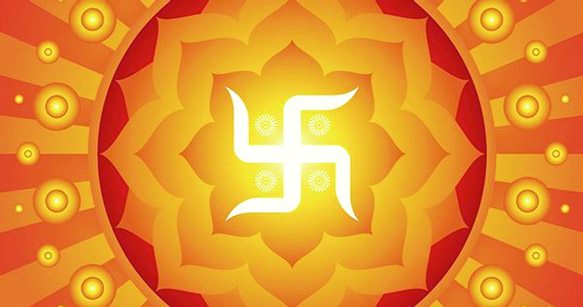Prof. Suresh Chander
The Swastika is one of the oldest and most widely recognized symbols in human history, crossing boundaries of time, geography, and culture. This emblem has been utilized for thousands of years, appearing in various civilizations worldwide—from the ancient Indus Valley to the pre-Columbian Americas, and from East Asia to Europe. Although it became associated with a particular ideology in the 20th century, the Swastika continues to serve as a strong symbol of our shared heritage and cultural diversity.
Origins and Meaning
The term “Swastika” is rooted in the Sanskrit word “svastika,” which translates to “good fortune,” “well-being,” or “auspiciousness.” Its design—a cross with arms bent at right angles, either clockwise or counterclockwise—has often been linked to concepts of cosmic movement, eternity, and equilibrium. This balanced shape reflects humanity’s profound connection to the natural world and the universe.
A Global Presence
The Swastika does not belong solely to any one community, civilization, or region; rather, it is a global symbol that embodies the shared identity of all humanity. Its presence can be observed in numerous cultures, each interpreting it in meaningful ways.
In India, the Swastika holds sacred importance in Hinduism, Buddhism, and Jainism, symbolizing prosperity and the eternal essence of life. In ancient China and Japan, it represented harmony and balance. In Native American traditions, it appears in art to signify the four cardinal directions and the cyclical nature of existence.
The symbol has also been found in Europe from prehistoric times, prominently featured in Greek, Roman, and Slavic art. Even early Christians adopted the Swastika as a symbol of Christ’s triumph. Archaeological discoveries in the British Isles, Scandinavia, and the Balkans illustrate its widespread use as both a decorative and spiritual motif.
Misinterpretations and Challenges
Some may view the Swastika’s widespread occurrences as indicative of the proliferation of specific religious ideologies, particularly Hinduism. While this interpretation highlights the interconnectedness of ancient cultures, it can overshadow the broader significance of the Swastika as a universal symbol for all humanity. The Swastika represents shared values and ideas rather than the dominance of one religion over another.
Regrettably, the legacy of the Swastika was marred in the 20th century when it was co-opted by the Nazi regime, becoming a symbol associated with hate and supremacy. Although this appropriation was brief in the context of the symbol’s extensive history, it has overshadowed its original meaning for many. Nevertheless, there are ongoing efforts to restore the Swastika’s positive identity by educating people about its rich and varied history.
Images and Their Stories
Visual artifacts showcasing the Swastika’s usage across cultures highlight its universal message. Items such as ancient pottery, temple carvings, textiles, and coins serve as evidence of its timeless appeal. These artifacts—from India, Greece, the Americas, and Scandinavia—speak volumes about the Swastika’s significance, reminding us that it is a symbol for all of humanity, not confined to any one group.
Conclusion
The Swastika stands as a powerful representation of humanity’s shared heritage. Its presence across diverse cultures emphasizes our interconnectedness and collective creativity. To restrict the Swastika to a single ideology or community is to overlook its profound and multifaceted legacy. By recognizing and valuing the Swastika’s history, we can reclaim it as a symbol of unity, harmony, and the enduring spirit of humanity.
For those keen to delve deeper into the Swastika’s global narrative, a wealth of detailed images and descriptions can be found on its dedicated Wikipedia page. These images serve as poignant reminders of a shared heritage that unites us all.
The diverse symbols displayed below, sourced from Wikipedia, span various cultures and eras, from ancient Mesopotamia to contemporary Europe. The Swastika’s widespread existence and diverse interpretations testify to a collective human experience that transcends geographical and temporal boundaries.
Note: Due to space restrictions, symbols from Vedic, Jain, Buddhist, and other Indian traditions are not included, as they are likely familiar to the readers.
(The author is the former Head of the Computer Engineering Department at G.B. Pant University of Agriculture & Technology.)


Leave a Reply